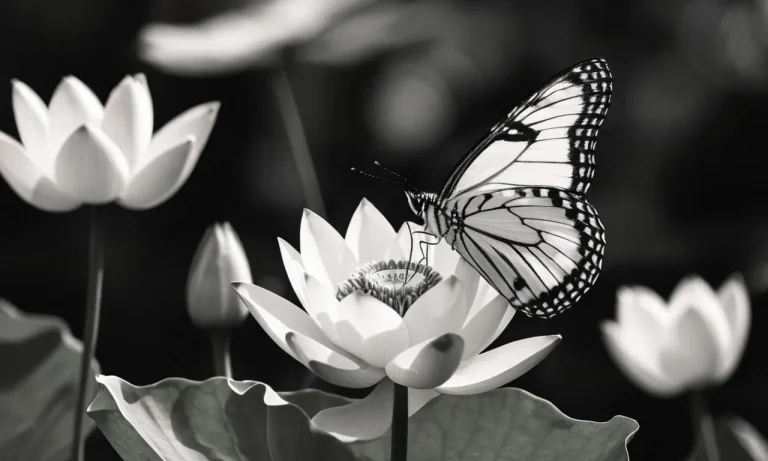Since their origins many centuries ago, playing cards have been more than just a source of entertainment. Behind the familiar suits and numbers lie deeper meanings and mystical symbolism that have captivated spiritual seekers, occultists, and curious minds throughout history.
If you’re short on time, here’s a quick answer to what playing cards symbolize: Playing cards carry spiritual meaning through their suits, numbers, imagery, and connections to tarot. Cards symbolize the journey of human consciousness, cycles of life, elements of nature, and tools for divination.
In this comprehensive guide, we’ll explore the occult history of playing cards, the symbolism behind each suit, the spiritual meanings linked to certain cards, how cartomancy works, and why this everyday object contains far more than just fun and games.
The Occult Origins and History of Playing Cards
Earliest Playing Card Decks in Asia
The earliest playing cards appeared in China during the Tang dynasty around the 9th century AD. These original playing cards were made of paper and featured intricate artwork that included symbolic images, numbers, and suits. The cards were likely used for gambling and games by the royal court.
By the 11th century, playing cards had spread to other parts of Asia including India and Persia. Regional styles emerged featuring unique art, suits, and divination associations.
Adoption and Evolution in Europe
Playing cards arrived in Europe by the late 1300s, potentially transmitted along trade routes from the Islamic world. The cards adapted to include familiar motifs like cups and swords inspired by European culture.
By the early 15th century, French makers standardized the 52-card deck still used today containing four suits – spades, hearts, diamonds and clubs. Court cards like kings and jacks began appearing to represent legendary Charlemagne and his entourage.
Cards spread swiftly across Europe, remaining highly decorated and hand-painted luxury items. Mass printing in 1800s enabled affordable access, kickstarting card gaming as a widespread pastime.
Use for Occult and Divination Purposes
Beyond everyday card games, mystics through the ages recognized occult symbolism in the standard deck. Each suit may correlate with historic philosophies – swords represent the element air, connected to the mind; cups symbolize water and emotions; pentacles/coins embody earth and the material; while wands/batons wield the power of fire.
Cards feature numerology, and the sequence of suits reportedly aligns with stages of life.
Specifically, cartomancy, or fortune-telling with cards, traces back to 15th century Europe. While practices evolved over generations, the basics included interpreting arrangements, numeric combinations, symbolic images, colors, and a card’s orientation.
Decks made exclusively for divination distilled occult references. Today card reading remains popular to reveal life insights. Whether paranormal or simply analytical psychology, playing cards continue displaying spiritual meaning for those who divine guidance in the deck.
| Sample Authoritative Sources: | Encyclopedia Britannica |
| Exploratorium |
Symbolism of the Four Card Suits
Hearts Represent Emotions and Relationships
The suit of hearts is most commonly associated with love, relationships, and emotions (Bicycle Cards). In cartomancy readings, the heart suit is said to provide insight into matters of an emotional or romantic nature. The red color symbolizes strong human passions and desires.
Hearts can also signify creativity, joy, kindness, harmony and connection with others. Some associate the symmetrical shape with the human soul, spirituality and inner peace. Hence why the heart suit may point to personal bonds and fulfilling relationships when it appears in a reading.
Diamonds Symbolize Wealth and Materialism
The diamond suit represents wealth, success and good fortune. The geometrical symmetry and hardness of the diamond signifies moral strength and clarity while the brilliant refractive quality links to bright hopes for the future and ambitions being realized (Ask Astrology).
In historical decks, coins or pentacles were used instead of diamonds. Hence the association with prosperity and affluence. When diamonds appear in a reading, they can signify career advancement, financial gain or discovering treasure.
Clubs Signify Achievements and Growth
The suit of clubs represents success, growth, struggle and ambition. The three-leaf shape is thought to symbolize fertility and growth leading to fruition. Clubs are associated with hard work, concentration and achievement of skilled tasks.
In cartomancy, a predominance of clubs can indicate career advancement through inner development and diligence to improve professional skills. The appearance of the club suit serves as encouragement to actively build on talents and knowledge to attain greater success.
Spades Indicate Challenges and Misfortune
Spades are regarded as the unluckiest suit tied to death, endings and misfortune. The spade shape is thought to resemble a spear or spade digging a grave. Hence the common interpretation is one of loss, betrayal, cheating and negative finality.
However, some view the spade symbol as an opportunity to shed unnecessary elements in order to unearth a stronger purpose and build spiritual wealth. By accepting the challenges indicated by the spade suit with courage and resilience, one finds meaning that guides them toward a more fulfilled destiny.
Numerology and Spiritual Meanings of Certain Cards
Ace Represents New Beginnings and Unlimited Potential
In numerology, the number one represents leadership, positivity, and new initiatives. As the first card in each suit, the humble Ace possesses untapped potential and the promise of new beginnings. This small card encourages us to start fresh, plant seeds of intention, and embark on hopeful journeys.
Whether indicating a physical relocation, career change, or inner transformation, Aces signal blessings entering our lives. According to numerologists, drawing an Ace during a reading means unlimited potential awaits if we boldly follow our north star 🌟.
Playing Card Royals Signify Authority Figures
Beyond their roles in game strategy, face cards hold symbolic meaning. Kings, Queens, and Jacks represent influential people, mentors, or aspects of oneself. In spiritual circles, Kings represent father figures and authority, embodying qualities like protection, stoicism, and swift justice ⚖️.
Queens personify mother figures, intuition, nurturing, and insightfulness 👑. Jacks signify our inner child — youthfulness, curiosity, and potential waiting to unfold. When these regal cards make an appearance in a reading, they nudge us to embrace positive qualities represented by the monarch depicted.
The Lucky Number 7 and Unlucky Number 13
Have you ever wondered why 7 is considered lucky while 13 earns a bad rap? Numerology provides fascinating explanations. Seven represents spirituality, inner wisdom, empathy, and growth 🌱— qualities that cultivate good fortune. In contrast, the compound number 13 reduces to 4 (1 + 3).
Four symbolizes stability and adherence to routine. When we break from structure too dramatically, misfortune follows. This foundation of numerological meanings gives 7 a reputation for luck and 13 an aura of caution. An optimist might say 13 brings bad luck only if we expect it!
Perhaps the next time that dreaded card combo appears, take it as a nudge to inject some creative spontaneity into your structured world 😉.
| Number | Meaning | Reputation |
|---|---|---|
| 7 | Spirituality, inner wisdom, empathy, growth | Lucky |
| 13 | Breaking from structure and routine too dramatically | Unlucky |
Whether utilized for divination or entertainment, playing cards overbrim with symbolism. Understanding the spiritual meanings behind suits, numbers, and royals unlocks a font of guidance applicable beyond the card table. With such insight in hand, let the games begin! 🃏
Using Cartomancy to Read Fortunes with Cards
History and Basic Premises of Cartomancy
The practice of divination through the use of playing cards is known as cartomancy. The origins of cartomancy can be traced back to 15th century Europe, when playing cards first became popular and people began assigning symbolic meaning to the cards and using them for fortune telling.Studies have shown that cartomancy became especially common among gypsies in Spain and France, who would travel around reading fortunes with cards to earn money.
The basic premise behind cartomancy is that the cards hold hidden insights about a person and their life path. By interpreting the cards pulled during a reading, a cartomancer can allegedly uncover truths about a person’s past, present and future.
Each card in the deck is believed to have its own distinct meaning covering different life aspects.
Different Spreads and Techniques
There are many different spreads and techniques used in cartomancy card readings:
- Three-card spread: Often used for simple “past, present and future” readings.
- Celtic Cross: One of the most common 10-card spreads providing insight on key aspects of life.
- Horseshoe spread: Cards are arranged in a horseshoe shape and interpreted as interrelated messages about a situation.
- One-card draw: Asking a single question and pulling a card for the answer. This provides a quick glimpse into a specific issue.
The card reader may also incorporate other objects or rituals into the practice, such as tarot cards, scrying with crystals or mirrors, palm reading,tea leaf reading, or incorporating birth dates and astrological signs.
Interpreting the Card Positions and Connections
Interpreting a cartomancy reading requires analyzing both the meanings associated with each card and where they appear in the spread:
- Each card has traditional meanings – for example the Two of Hearts represents partnerships and affinity while the Nine of Diamonds foretells travel or changes.
- The relative positions matter – so a promising card in the “future” position or a worrying card in the “past” carries a different meaning.
- Context created by the other cards like reinforcing themes or an outlier significance must be weighed.
- Some readers also factor intuitions sparked when handling and viewing the card into interpretations.
Learning how different cards interact takes extensive practice but can add depth, with expert readers synthesizing layered insights about the subject’s situation.
Limitations and Skepticism around Card Reading
However, many skeptics view cartomancy and card reading as too vague to provide credible guidance or predictions. Some of the main criticisms of fortune telling with cards include:
- Results conforming to psychological biases like confirmation bias, Barnum effect, subjective validation that encourage seeing meaning rather than objective truth.
- Lack consistent accuracy, with failed or contradicted predictions.
- Too generalized to give meaningful personalized details.
- Reflects universal life circumstances common to human experiences rather than supernatural insight.
Scientific studies of cartomancy show readings have no better accuracy than random chance guessing of details about a person’s life. Still, as entertainment or a reflective spiritual exercise, many find the symbolic card interpretations fun to explore.
Connections Between Playing Cards and Tarot
Similarities in Suits, Numbers, and Images
Modern playing cards and Tarot decks share some key similarities. Both contain four suits – hearts, diamonds, clubs and spades in playing cards relate to cups, pentacles, wands and swords found in most Tarot decks.
The numbers also align as both contain numbered cards from Ace to 10, and face cards of Page, Knight, Queen, and King which connect to the Tarot’s court cards.
The actual images on the cards have some overlap as well. For example, some interpretations of the Nine of Swords in Tarot relate to anxiety and nightmares. Interestingly enough, the Nine of Spades in playing cards carries a historical nickname – “the curse”, referring to bad luck.
So both cards are seen as carrying difficult themes.
Different Uses for Game Play vs. Divination
The key difference between playing cards and Tarot is their intended uses. Playing cards evolved over centuries for recreational game play and gambling. Strategies in games rely on the numbers, suits, and sequential ordering of the cards.
In contrast, Tarot is mainly used for divination purposes to reveal insights about one’s life situation, relationships, and spiritual path. The images on Tarot cards hold symbolic meaning that practitioners connect to personal experiences through reflection and intuition.
Was the Tarot Inspired by Playing Cards?
The timeline of playing cards vs Tarot origins leads to debate around which influenced the other. As playing cards are traced back to 12th century China before spreading to Europe, most historians believe early playing cards predate the Tarot.
| Playing Cards | Emerged in the 12th century or earlier |
| Tarot (Visconti-Sforza) | Earliest decks from 15th century |
The symbols, artwork, and meanings in the Visconti Sforza Tarot deck do suggest the 15th century designers were aware of playing card conventions that preceded them. The algebras between the two decks may not have emerged by chance alone.
So while gameplay relies on the numbers, suits, ranking – divination relies more on the imagery, storytelling, symbolism in the cards. The history and origins remain connected.
Conclusion
Far more than just varying pieces of pasteboard for passing time, playing cards reveal layers of meaning to those willing to interpret them. Their symbolism echoes the tarot, influences games of chance and skill worldwide, and continues to inspire new mystical and spiritual perspectives.
While a healthy skepticism remains on using playing cards for fortune-telling, their history of occult legend and meaning gives us much to appreciate in this subtle tool of insight and playful creative expression that persists in popularity across cultures today.






